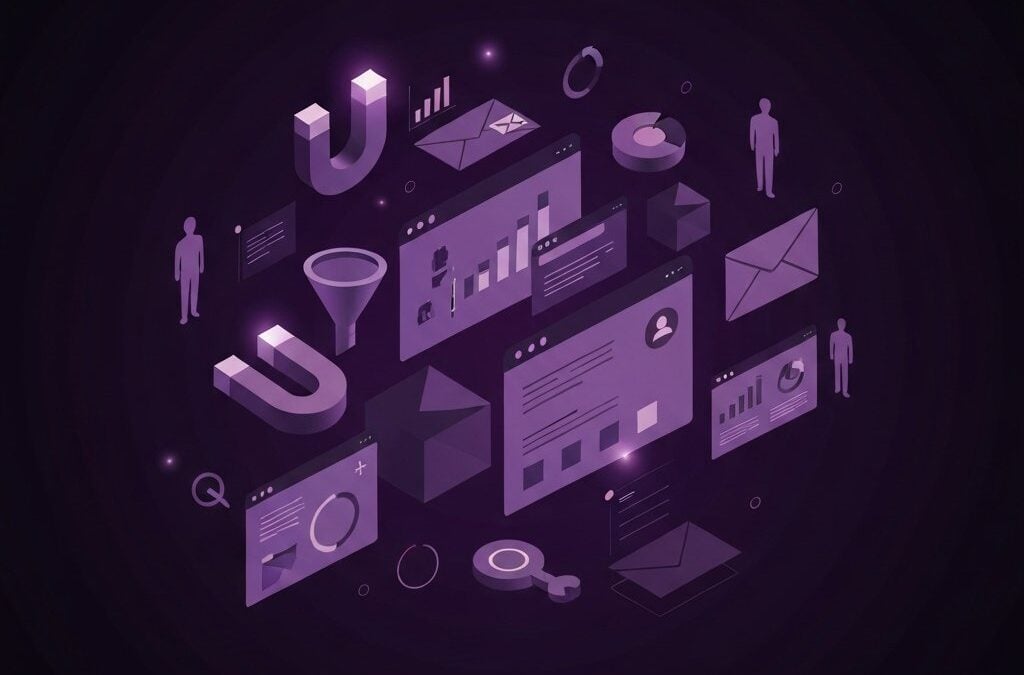An Evolving Landscape in the Digital Era
Artificial intelligence is revolutionizing digital advertising at a pace that leaves many marketers in awe. AI-driven innovations are remolding ad targeting, placement, and customization. Digital strategies once seen as static now blend art and smart automation. Many experts now proclaim, “AI is no longer a luxury; it is essential.” This transformation is fueled by advanced algorithms that learn from user behavior and predict trends in real time. It is an exciting time, and advertisers are experiencing a true paradigm shift in how ads are created, managed, and optimized.
In the early days of digital ads, strategies focused primarily on generic targeting methods and broad audience reach. Today, smart automation techniques powered by AI have led to personalized and interactive ad experiences. These innovations allow businesses to connect with consumers in more meaningful ways. The measurable improvements in engagement metrics have been impressive. Campaigns are now more data-driven, evolving into tailor-made experiences that reflect the dynamic nature of consumer behavior. Furthermore, AI systems analyze vast amounts of data quickly to offer actionable insights for future campaign strategies. This evolution is ongoing and offers immense opportunities for creative and efficient advertising.
AI-Powered Innovations in Targeting and Personalization
AI reshapes the digital ad industry by unlocking new potential for targeting and personalization. Marketers can now deploy campaigns with greater precision. This precision comes from advanced algorithms that analyze user behavior, historical data, and real-time trends. Advertisers are using predictive analytics to understand what will capture a viewer’s attention. AI has become the driving force behind customizing ad campaigns to specific consumer segments. By integrating diverse data sources, AI systems develop profiles that can predict customer interests with high accuracy.
Several key innovations have emerged from AI adoption. First, dynamic ad creation allows for the automatic adjustment of content based on current user interactions. Second, AI-powered bidding systems compete in real time to secure ad placements that maximally engage target audiences. Third, chatbots and conversational AI tools now enrich customer interaction with ads through live chats and personalized recommendations. These advancements mean that brands can communicate timely information that resonates with their audiences. Just as one expert noted, “AI transforms static ads into living, breathing experiences that adapt to the viewer.”
- Advanced targeting algorithms
- Dynamic ad content
- Real-time bidding and optimization
- Enhanced personalization via data analytics
Enhancing ROI with Smart Automation
Many advertisers are witnessing a surge in ROI thanks to AI innovations. The return on investments now appears more predictable and measurable. Traditional ad campaigns often involved heavy guesswork. Today, smart automation transforms this uncertainty into a precise science. AI tools support advertisers in assessing data patterns and automated decision-making. As illustrated by Microsoft’s recent campaigns, AI integration has produced tangible benefits in ROI. Advertisers have reported notable improvements in engagement rates and cost efficiency.
A deep dive into smart automation reveals several benefits. AI allows for real-time adjustments based on shifting consumer behavior and market trends. This agile approach ensures that every dollar spent on advertising is optimized. Additionally, campaign performance is continually enhanced through machine learning feedback loops. These loops empower advertisers to refine audience segmentation and allocate resources more efficiently. The implementation of AI in digital campaigns creates a competitive advantage unmatched by older methods. As one campaign manager explained, “Our ROI has improved because AI constantly fine-tunes our approach, saving us time and money.”
| Aspect | Traditional Advertising | AI-Driven Advertising |
|---|---|---|
| Targeting | Broad and generic | Hyper-personalized and dynamic |
| Data Analysis | manual and periodic | Real-time with automated insights |
| Ad Creation | Static and pre-planned | Dynamic with adaptive content |
| ROI Measurement | Often ambiguous and delayed | Precise and immediate |
| Customer Engagement | Limited personalization | Highly interactive and customized |
| Budget Allocation | Fixed and less flexible | Agile and constantly optimized |
Creativity Meets Technology: Merging Art and Science
Digital advertising is as much about creativity as it is about precision. AI acts as a bridge between these two aspects. Creative teams can now leverage data analytics to inform design choices. For instance, ad campaigns are now informed by predictive trends that help tailor visuals and copy. Artists and technologists collaborate to produce captivating content that resonates on both emotional and rational levels.
The fusion of creativity with AI has unlocked vast new opportunities for brands. By analyzing viewer emotions and behavior, AI tools can recommend design tweaks. These adjustments lead to visuals that better capture the audience’s attention. Businesses benefit from increased engagement, higher click-through rates, and improved brand loyalty. As one creative director remarked, “We now have the confidence to experiment because AI provides the data that underpins our decision-making.”
- Adaptive visual storytelling that adjusts based on audience feedback.
- Content creation driven by real-time trends and consumer interests.
- Integration of multimedia elements according to predictive analytics.
- Enhanced creative brainstorming sessions fueled by data insights.
Navigating Ethical Challenges and Data Privacy
While AI opens new horizons, it simultaneously introduces new ethical challenges. Privacy concerns and data handling practices remain in the spotlight. Advertisers must balance innovation with consumer trust. Data misuse can lead to backlash and legal issues. Therefore, it is crucial for businesses to commit to transparent data policies that align with global privacy standards.
Decisions regarding ad targeting, personalized content, and data collection must be carefully managed. Many experts warn, “The data goldmine must be mined responsibly.” Companies have to adopt measures to safeguard the privacy of consumer information. Best practices include clear communication of data usage policies and securing user consent for data processing.
- Implementing robust data encryption measures.
- Ensuring that data collection methods comply with global legal requirements.
- Maintaining transparency in how AI algorithms use consumer data.
- Periodically auditing AI systems for bias and fairness.
- Training staff to understand both opportunities and limitations.
For further insights on ethical AI usage and advertising transparency, visit Digital Marketing Institute, Forbes, and IAB.
Case Studies: AI in Action
Real-world examples of AI transforming digital advertising underline its practical benefits. Many businesses continue to report marked differences in campaign outcomes due to AI integration. A leading fashion brand recently implemented an AI-driven ad strategy using advanced predictive analytics to segment their audience. The outcome was a 30% increase in conversion rates and a 25% rise in overall engagement within a few months.
Another example comes from the e-commerce sector. An online retailer harnessed AI for real-time bid optimization. Their campaigns adjusted ad clusters based on purchasing trends and inventory levels, reducing ad spend while increasing sales. Advertisers now have evidence that AI drives a promising future for digitally native brands.
- Enhanced targeting and personalization driving higher engagement.
- Real-time data adjustments leading to more efficient ad spending.
- Increased conversion rates and overall sales.
- Agility in campaign management during unforeseen market shifts.
Future Outlook: The Road Toward 2025 and Beyond
Looking forward, digital advertising appears both promising and challenging. Innovations in AI continue to redefine campaign strategies, branding, and consumer engagement. By 2025, advertising will be driven by even more sophisticated data tools and automation techniques. Many thought leaders predict that AI will soon be at the core of every advertising decision.
Trends to watch include:
- Greater integration of AI in multimedia ad creation.
- Hyper-personalized ad experiences that react to real-time data.
- Automated content generation that remains creative and engaging.
- Enhanced consumer data analytics for faster decision making.
- Ethical AI guidelines ensuring responsible advertising practices.
For more on future trends, check out Marketing Trends 2025.
A Closer Look at AI and Business Growth
AI’s impact on digital advertising is a transformative movement that boosts business growth. Increased brand visibility and compelling ad narratives directly result from effective AI integration. Smart algorithms drive smarter investments and set new benchmarks in efficiency and innovation.
Enhanced customer service via AI chatbots, predictive product suggestions, and personalized shopping experiences further strengthen customer connections. Access to real-time dashboards with in-depth performance metrics enables advertisers to recalibrate their campaigns and tap into emerging trends.
- Data-driven decision making, reducing guesswork.
- Improved campaign efficiency through automation.
- Tailored interactions that enhance customer satisfaction.
- Enhanced performance metrics for agile adjustments.
Wrapping Up the Transformation
Digital advertising is undergoing a complete reinvention, underpinned by emerging AI technologies that streamline processes and create uniquely tailored experiences. AI’s ability to predict trends, optimize ad delivery, and enhance customization is a game changer for the industry.
As one industry leader put it, “AI has sparked an advertising renaissance that we are only beginning to understand.” The integration of AI in multimedia efforts, ad personalization, and ethical advertising is set to grow, marking the future of digital advertising as dynamic and responsive.
Final Thoughts and Actionable Takeaways
The future of digital advertising is brighter thanks to the confluence of creativity and AI. Improved targeting, optimized ad spending, and high ROI responsiveness are reshaping engagement strategies between brands and consumers. To remain competitive, businesses must invest in AI-powered tools, ensure transparent data practices, and foster creative innovation.
- Invest in AI-powered tools for better audience segmentation.
- Ensure ethical standards and transparent data collection practices.
- Leverage real-time analytics to dynamically adjust campaigns.
- Foster creative innovation by marrying data insights with compelling storytelling.
- Stay informed on emerging trends through trusted sources like Promarkia Blog.
Digital advertising is evolving rapidly with AI at its core. Embracing these trends can lead to substantial business growth, improved campaign efficiency, and a superior consumer experience.



